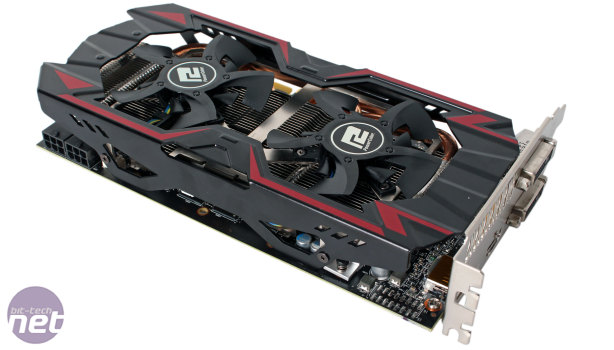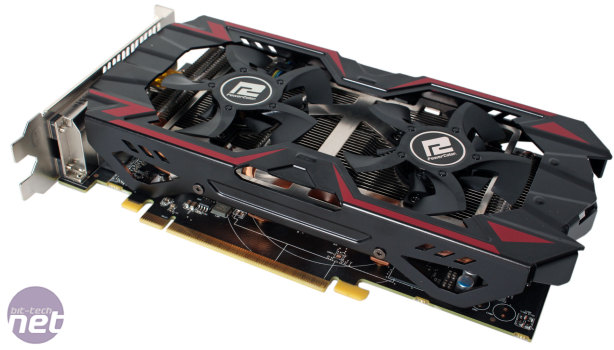
Performance Analysis
The R9 285 starts slightly behind the GTX 760 in Battlefield 4 and the R9 280 is also ahead by a few fps. The new card also only manages to be 1fps faster than the R9 270X at both resolutions tested. Perhaps in this game the extra 1GB of memory that the R9 280 has actually helps, though Powercolor's small factory overclock sees the R9 285 at least pull level with the GTX 760.In BioShock Infinite the R9 285 does fantastically well, as it overtakes both the R9 280 and the GTX 760 and is even a touch faster than the R9 280X at 1080p. As such, it's possible that AMD has made some significant driver improvements related to this game, as it's a whole 11fps ahead of the R9 280, and leaves the GTX 760 trailing too, consistently achieving over 60fps for very smooth gameplay. It's strong at 2,560 x 1,440 too, and still 14 percent ahead of the GTX 760 on minimum frame rates.
In Crysis 3, the new card slots in between the GTX 760 and the R9 280X, again surpassing the older R9 280. It just about manages playable frame rates at 2,560 x 1,440, but you'd definitely want to lower the details for a more enjoyable experience at this resolution, especially in a fast-paced game such as this.
In Skyrim, the R9 285 again trumps the GTX 760 and R9 280 cards. Even at 1440p, it manages a minimum frame rate of more than 60fps, something those other two cards are unable to match.
Unigine Valley has always given an advantage to Nvidia hardware, and that's still the case. At 1080p, the GTX 760 is better by 7 percent, though this lead is reduced to 4 percent once we factor in the overclock from Powercolor, and the R9 285 is still slightly ahead of the R9 280. However, this changes at 1440p, as the two AMD cards have the exact same score. Meanwhile, at this more demanding resolution, the GTX 760 extends its lead to 10 percent (7 percent with the Powercolor overclock applied).
Power consumption is where you'd expect, and under load the card consumes slightly less power than the R9 280, something which AMD's typical board power figure hinted at being the case. The GTX 760 consumes slightly less power, though really the differences are very marginal. We don't have a reference sample of the R9 285 so we can't compare the performance of the Powercolor cooler to that. However, we do see that the XFX cooler on the R9 280 DD Edition is the better of the two, though it's larger as well. Even so, the Powercolor cooler is still easily capable of taming the R9 285 GPU. Under load, the fans are not loud but they are clearly audible, and spin up to around 55 percent. You won't go deaf, but there are likely to be quieter coolers out there if that's what you're after.
We weren't able to achieve that big an overclock with the R9 285, but even so we were able to squeeze an extra 5 percent out of the card (compared to the Powercolor factory overclock) in Battlefield 4. Even this was enough to surpass both the GTX 760 and R9 280, showing just how small the differences are. Crysis 3, meanwhile, improved by 13 percent as is evidently more responsive to memory frequency tuning than Battlefield 4 is. Finally, the Unigine score increases by 8 percent at both resolutions, and this is again enough to surpass the GTX 760.
Conclusion
Our performance charts show that the R9 285 is neck and neck with the GTX 760, or if not then slightly better overall, but differences will be hard to spot – they're small and game-dependent. Specifically referring to this Powercolor model now, it's honestly nothing special. We like its relatively compact size and the cooler is adequate too, but it's not outstanding and has no special features to speak of – the factory overclock is more of a token gesture than anything designed to change the performance landscape. You'll likely be just as well served (or better) by the cards of another AIB.What will determine the best deal will be price – the R9 285 starting price of £170 is spot on given how it performs next to a GTX 760, and it doesn't intrude on the price territory of the R9 280X or GTX 770 either, so you want a model as close to £170 as possible. It's not the bargain of the century, but those are rare in this market, and overall it's a good deal, especially so if you factor in the three free game choices. If you're solely focussed on the best price and performance, then keep an eye on R9 280 deals over the coming weeks, as they will deliver better bang for buck – we've already seen some for £150. However, if you want the latest graphics technology AMD has to offer, R9 285 still delivers plenty for the money.

-
Performance34 / 40
-
Features25 / 30
-
Value25 / 30


MSI MPG Velox 100R Chassis Review
October 14 2021 | 15:04











Want to comment? Please log in.